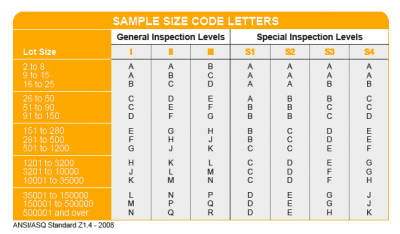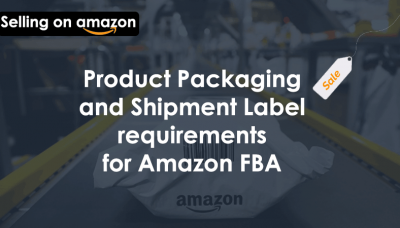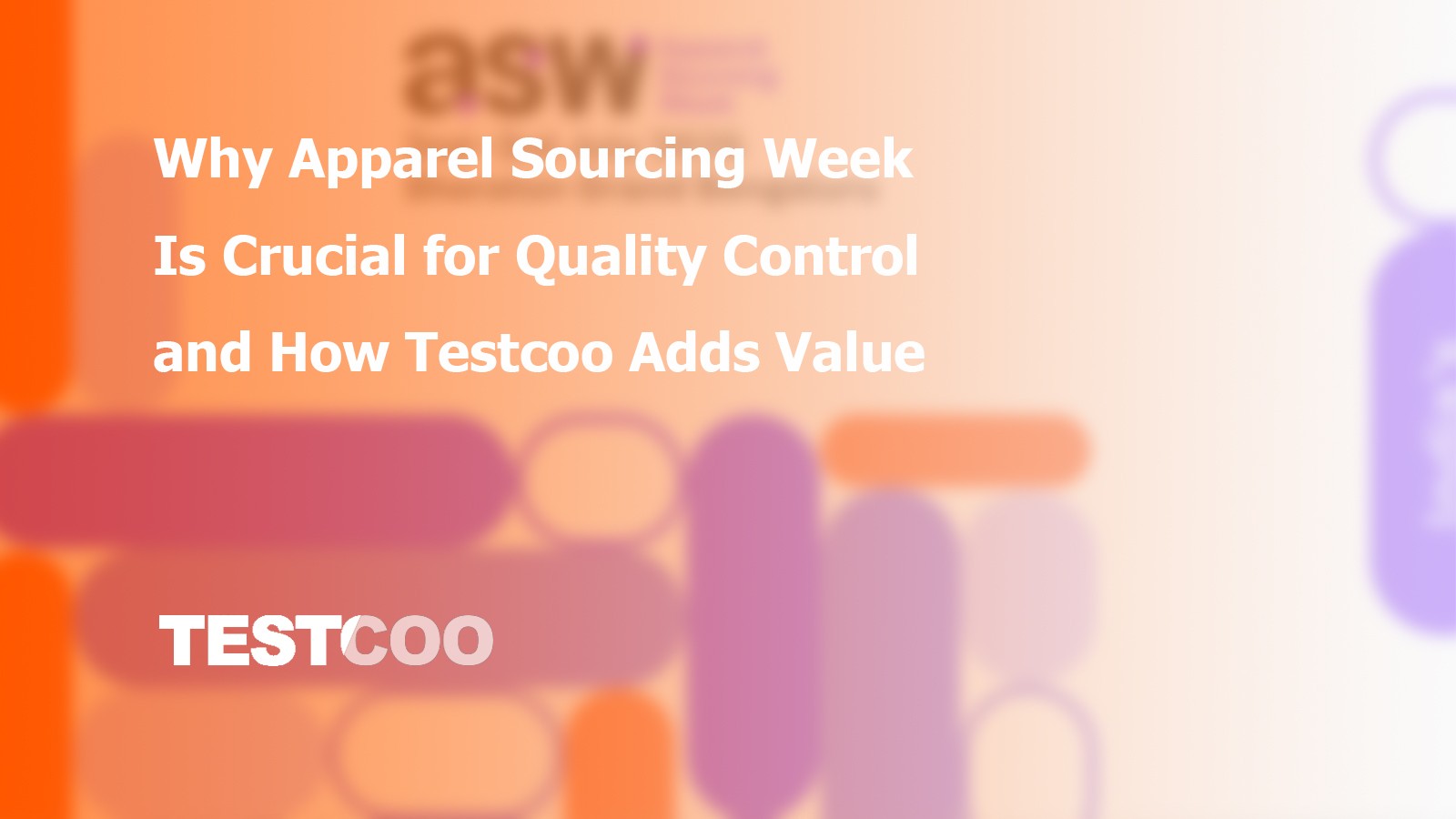Lead Time Reduction in the Fashion Industry: Why It Matters and How Testcoo Supports Brands

In the dynamic world of fashion, speed is everything. Consumers demand instant gratification, trends change overnight and fast-fashion giants continue to redefine the pace of supply chains. In this competitive landscape, reducing lead time has become more than a best practice, it’s a survival strategy.
For fashion brands, wholesalers and retailers, every day saved in the production and delivery cycle means improved profitability, faster trend adoption and stronger customer loyalty. But lead time reduction doesn’t just mean working faster it means working smarter, with better processes, stronger supplier relationships and enhanced quality assurance.
This is where Testcoo, a trusted third-party inspection and audit company, plays a key role. By helping brands ensure product quality, streamline inspections and reduce delays, Testcoo supports a smoother and more predictable supply chain.
In this blog, we’ll explore:
- What lead time means in the fashion industry
- Why reducing lead time is critical
- Practical strategies for reducing lead time
- The role of quality inspections in preventing costly delays
- How Testcoo’s services help brands achieve faster, more reliable timelines
What Is Lead Time in the Fashion Industry?
Lead time refers to the total time taken from when a brand places an order to when finished products are delivered. In fashion, it typically includes:
- Design and Sampling Lead Time – From concept to prototype.
- Raw Material Procurement Lead Time – Sourcing fabrics, trims and accessories.
- Production Lead Time – Cutting, sewing, finishing and packaging.
- Inspection Lead Time – Checking quality to avoid shipment rejections or returns.
- Logistics Lead Time – Shipping from factory to warehouse or store.
A traditional apparel supply chain may take 120–180 days from design to delivery. Fast-fashion leaders like Zara or Shein, however, have reduced this drastically to 15–30 days, giving them a competitive edge.
Read more: Reinventing apparel manufacturing for speed, growth and sustainability
Why Is Lead Time Reduction So Important in Fashion?
In today’s world, consumers expect new trends and collections almost instantly and brands that fail to keep up risk losing market share and customer loyalty. Reducing lead time, the total time from design to delivery allows fashion companies to respond quickly to changing trends, manage inventory more efficiently and improve cash flow. Shorter lead times also minimize the risk of outdated or unsellable stock, helping brands remain competitive while maintaining quality. The following points highlight why lead time reduction is critical for modern fashion businesses.
- Trend Responsiveness
Fashion trends shift rapidly. A delay of even a few weeks can make collections outdated and unsellable. - Customer Expectations
Consumers expect “new arrivals” every few weeks. Brands that deliver faster win customer loyalty. - Inventory Management
Shorter lead times reduce the need for large stockpiles, lowering warehousing costs and risk of unsold items. - Profit Margins
Faster cycles mean more collections per year, improved cash flow and reduced markdowns. - Competitive Advantage
Brands with optimized lead times can compete with fast-fashion giants while maintaining quality.
Challenges to Reducing Lead Time
While lead time reduction is crucial, it isn’t always easy. Common challenges include:
- Supplier Delays – Factories missing deadlines due to capacity or raw material shortages.
- Quality Issues – Failed inspections leading to rework, replacements or shipment delays.
- Logistics Bottlenecks – Customs clearance, port congestion and shipping delays.
- Over-Reliance on Manual Processes – Lack of digitalization in production and supply chain tracking.
- Complex Supply Chains – Multi-country sourcing adds complications to timelines.
Strategies for Reducing Lead Time in Fashion Industry
1. Strengthen Supplier Relationships
Building strong, long-term partnerships with reliable factories ensures commitment to deadlines. Negotiating clear SLAs (service-level agreements) reduces risks.
2. Optimize Raw Material Procurement
Pre-booking raw materials, maintaining fabric stock libraries and sourcing locally where possible can save weeks.
3. Invest in Digitalization
Tools like PLM (Product Lifecycle Management) and ERP (Enterprise Resource Planning) software enable real-time collaboration, reducing approval delays.
4. Adopt Agile Production Models
Smaller batch sizes, flexible manufacturing and just-in-time (JIT) production reduce waiting times.
5. Streamline Quality Inspections
Pre-shipment rejections cause massive delays. By conducting during production inspections and final random inspections early, brands can catch defects before mass production, saving both time and money.
6. Use Nearshoring and Regional Production
Relocating production closer to target markets can reduce logistics lead time significantly.
7. Collaborate with Third-Party Experts
Partnering with companies like Testcoo ensures both quality control and time efficiency, minimizing the risk of last-minute surprises.

The Role of Quality Control in Lead Time Reduction
Many brands underestimate how much quality issues impact lead time. Consider this:
- If 10% of an order fails inspection, reworking may take 2–4 weeks.
- If a shipment is rejected at the destination, lead time extends even further due to returns and replacements.
- Quality disputes with suppliers delay payments and strain relationships.
By embedding quality control at every stage from fabric inspection to inline and final inspections brands can minimize disruptions and keep timelines intact.
Read more: What is Quality Inspection? A Complete Guide
How Testcoo Helps Reduce Lead Time in Fashion
As a trusted third-party inspection and audit partner, Testcoo supports brands in achieving faster, smoother supply chains by:
1. Flexible Scheduling & Same-Day Reports
Testcoo offers same-day inspection reports (SDR), allowing brands to make faster decisions without waiting days for results.
2. Global Inspector Network
With a presence across major apparel hubs, Testcoo deploys inspectors quickly, reducing scheduling delays.
3. Comprehensive Inspections
- Inline inspections to catch defects early.
- Final random inspections before shipment.
- Fabric and lab testing to avoid surprises in production.
4. Digital Inspection Platform
Testcoo’s online platform enables clients to book inspections, track progress and download reports instantly saving time lost in back-and-forth emails.
5. Supplier Audits
By conducting supplier and factory audits for compliance and capacity, Testcoo helps brands work only with reliable partners who can meet timelines.
6. Customizable Solutions
Every fashion supply chain is different. Testcoo tailors inspection checklists and workflows to meet the specific needs of fast-moving brands.
With these solutions, Testcoo not only reduces the risk of delays but also empowers brands to compete with fast-fashion leaders in terms of speed and quality.
Case Example: Reducing Lead Time with Proactive Inspections
Imagine a brand launching a summer collection in Europe. If the shipment is delayed by even three weeks, it risks hitting stores in autumn, making much of the stock unsellable.
- Without inspections: The brand receives defective goods, returns them and loses the season.
- With Testcoo: An inline inspection catches stitching defects early. The factory corrects them before mass production, saving weeks and ensuring on-time delivery.
This proactive approach demonstrates how inspections directly contribute to lead time reduction and business success.
Read more: Third-Party QC vs. In-House QC in 2025: Unraveling the Cost-Effectiveness Mystery
FAQs on Lead Time Reduction in Fashion Industry
Q1. What does lead time mean in the fashion industry?
Lead time is the total time from when a brand places an order to when finished goods are delivered, including design, production, inspection and shipping stages.
Q2. Why is reducing lead time important for fashion brands?
Because fashion trends change rapidly, reducing lead time helps brands deliver collections on time, reduce inventory risks and stay competitive.
Q3. How can fashion brands reduce production lead time?
Brands can optimize raw material sourcing, adopt agile production, digitize approvals, conduct proactive inspections and collaborate with reliable suppliers.
Q4. How do quality inspections help reduce lead time?
Inspections prevent last-minute surprises by catching defects early. This avoids rework, shipment delays and costly returns.
Q5. How does Testcoo support lead time reduction?
Testcoo provides flexible scheduling, same-day reports, global inspectors, comprehensive inspections, supplier audits and digital platforms to ensure faster and more reliable supply chains.
Conclusion
In the fast-paced fashion industry, reducing lead time is no longer optional, it’s essential. From trend responsiveness to profitability, every brand benefit is tied to faster, more efficient supply chains.
But speed must never come at the expense of quality. That’s why partnering with a trusted third-party like Testcoo gives brands the perfect balance quick turnarounds and uncompromised quality.
With its global expertise, real-time reporting and proactive inspections, Testcoo empowers fashion brands to confidently reduce lead times, deliver on-trend collections and satisfy customers worldwide.
If you’re ready to make your supply chain faster and smarter, Testcoo is your partner in lead time reduction.
Free Sample Report Performance Quality Control
Download a sample report to keep control of your supply chain!
Featured Articles
 AQL Table | How to Read It
AQL Table | How to Read It TOP 10 Common Defects in Garments Quality Inspection
TOP 10 Common Defects in Garments Quality Inspection Product Packaging and Shipment Label requirements for Amazon FBA
Product Packaging and Shipment Label requirements for Amazon FBA What Is ASTM-F2413-18? Protective Footwear Standard
What Is ASTM-F2413-18? Protective Footwear Standard How to Conduct Third-Party Quality Control Inspections for Electric Scooters
How to Conduct Third-Party Quality Control Inspections for Electric Scooters SMETA Audit-What is SMETA Audit?
SMETA Audit-What is SMETA Audit? TESTCOO Supplier Verification/Certification Service SLCP, Higg FEM, GRS, GOTS
TESTCOO Supplier Verification/Certification Service SLCP, Higg FEM, GRS, GOTS Quality Control Inspection Company in China
Quality Control Inspection Company in China What is Quality Inspection? A Complete Guide
What is Quality Inspection? A Complete Guide Guidelines for Product Inspection in India
Guidelines for Product Inspection in India
Category
- Production Inspection Service
- Factory Audit
- Softline Inspection
- Hardline Inspection
- Electrics Inspection
- Certification
- Checklist
- Manufacturers
- Quality Assurance Basics
- Products Recall
- AQL
- Guidence and Standard
- News
- Supplier Management
- Amazon
- Protective Equipment
- e-commerce quality control
- Indian Manufacturing
- Soft Goods Quality Control
- Supply Chain Management
- Supply Chain Resilience
- E-Commerce Quality Control
- ISO 2859
- Supply Chain Optimization
- Garment Industry
- Higg Index






